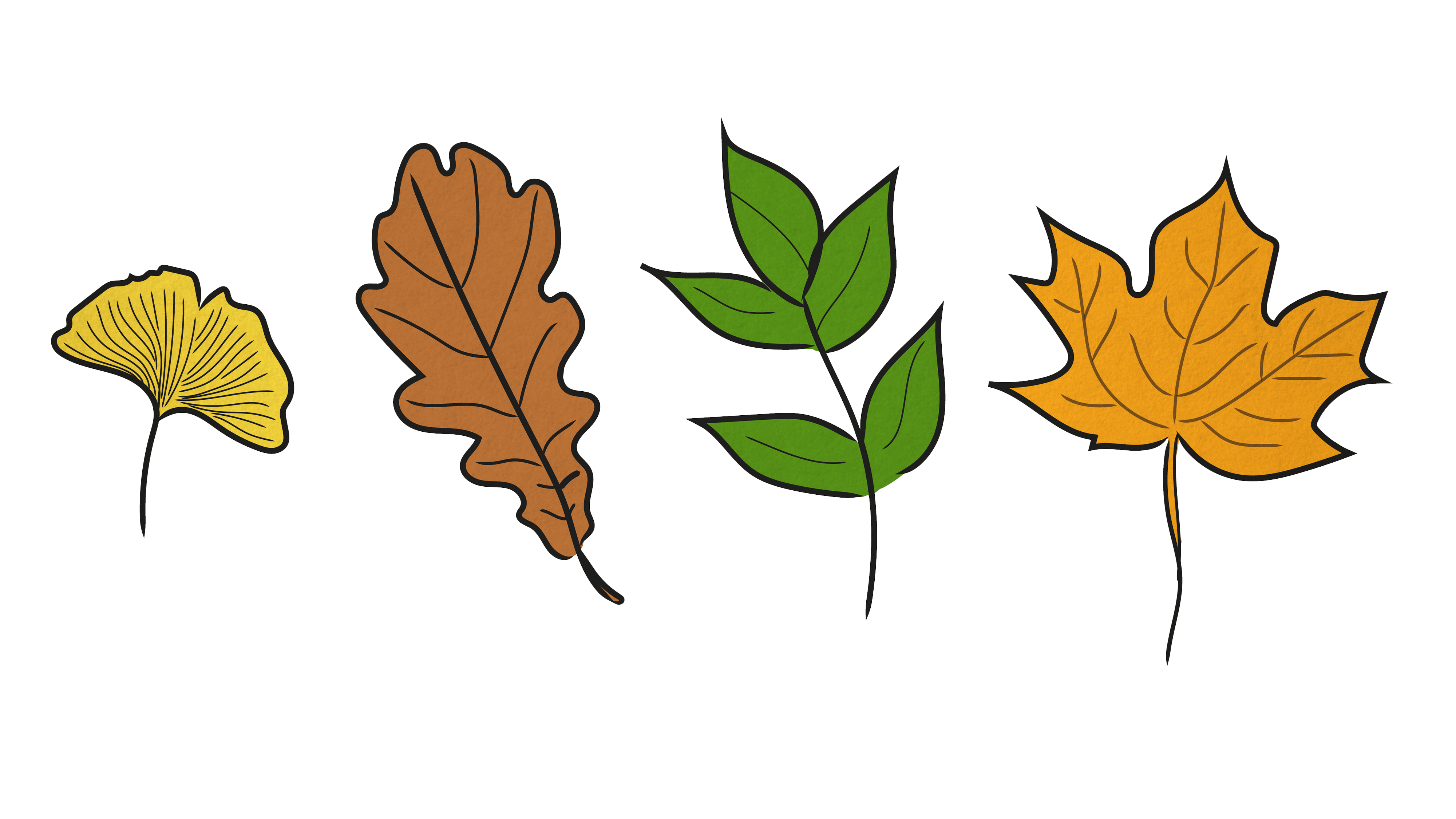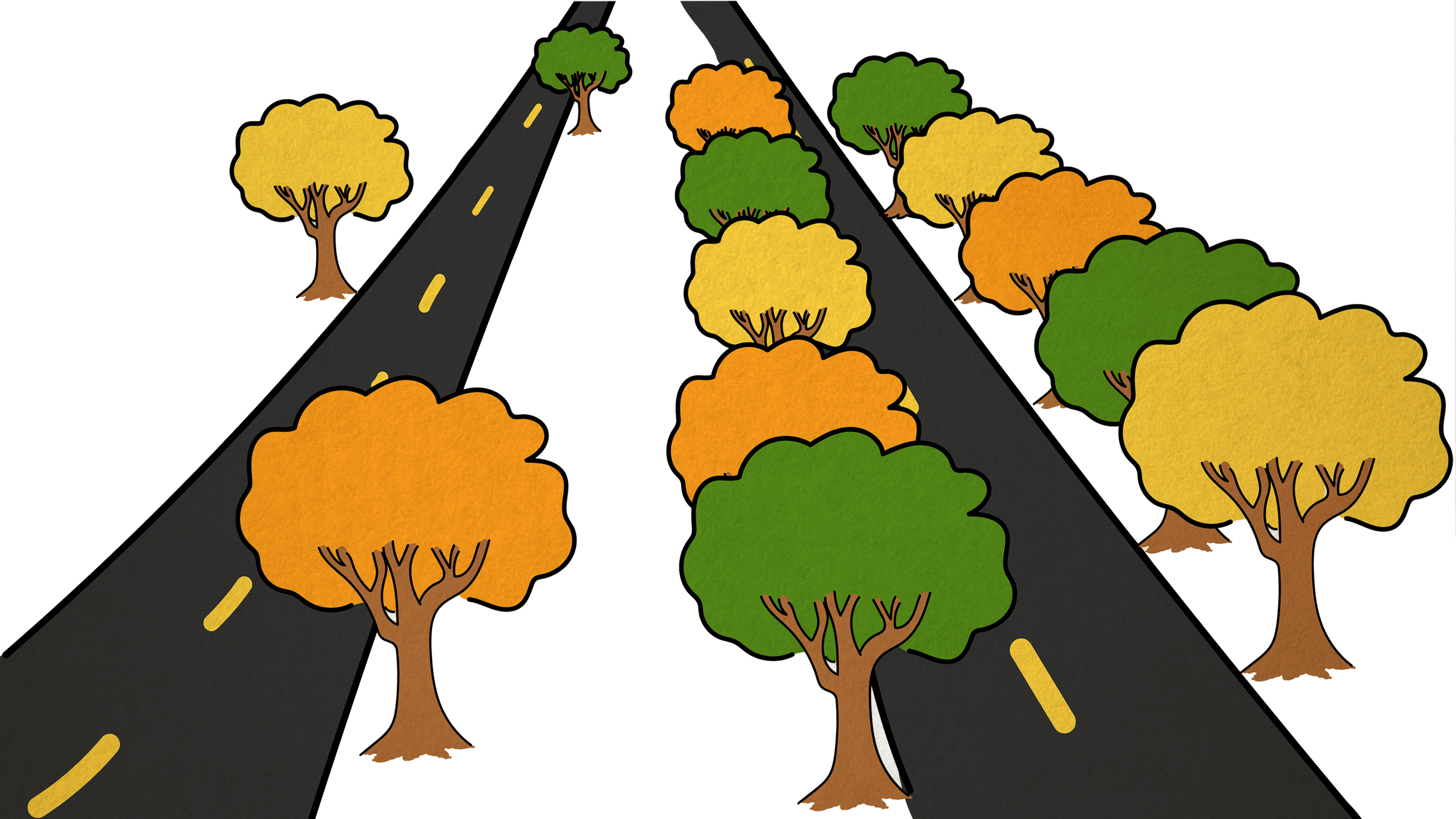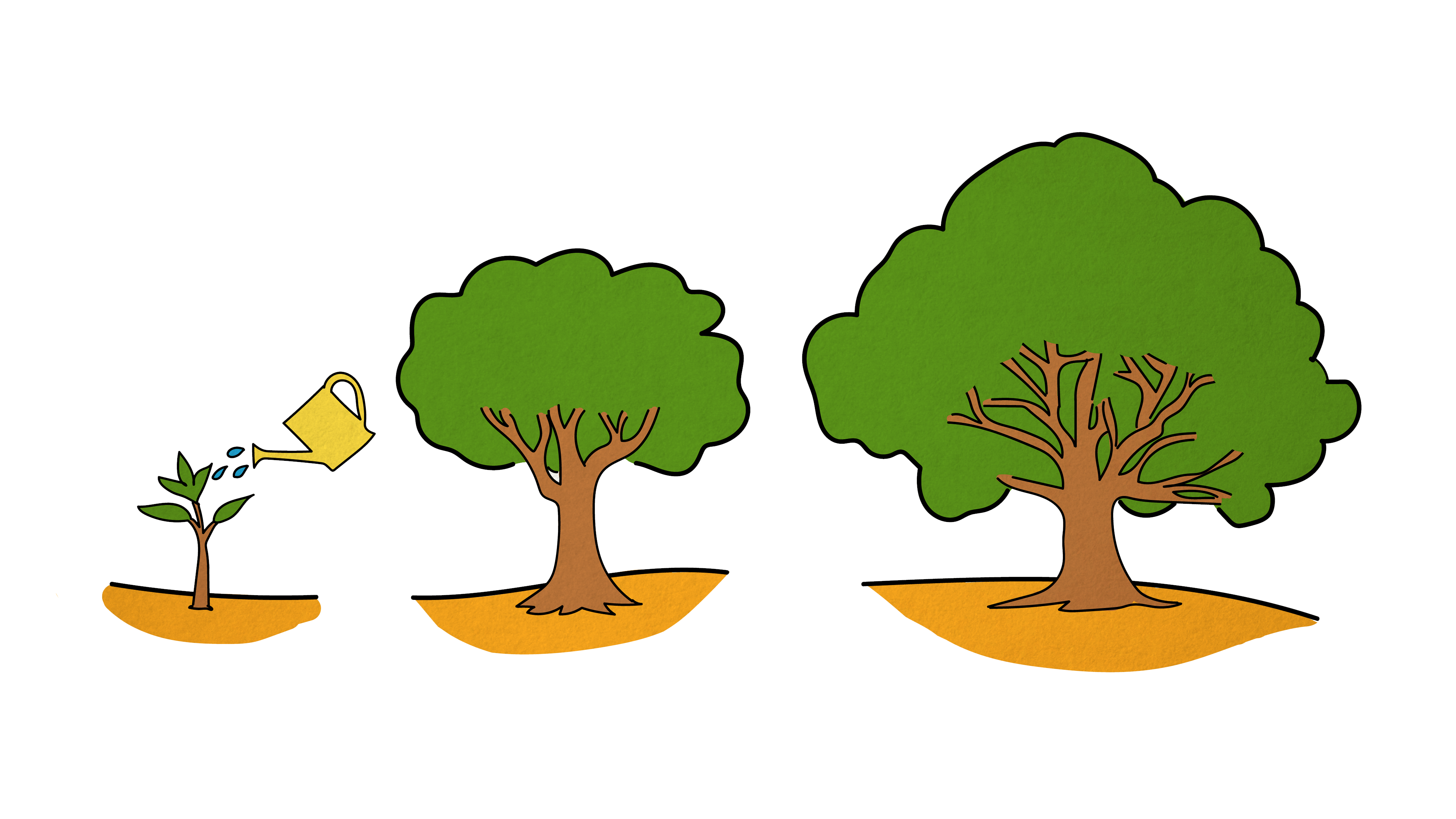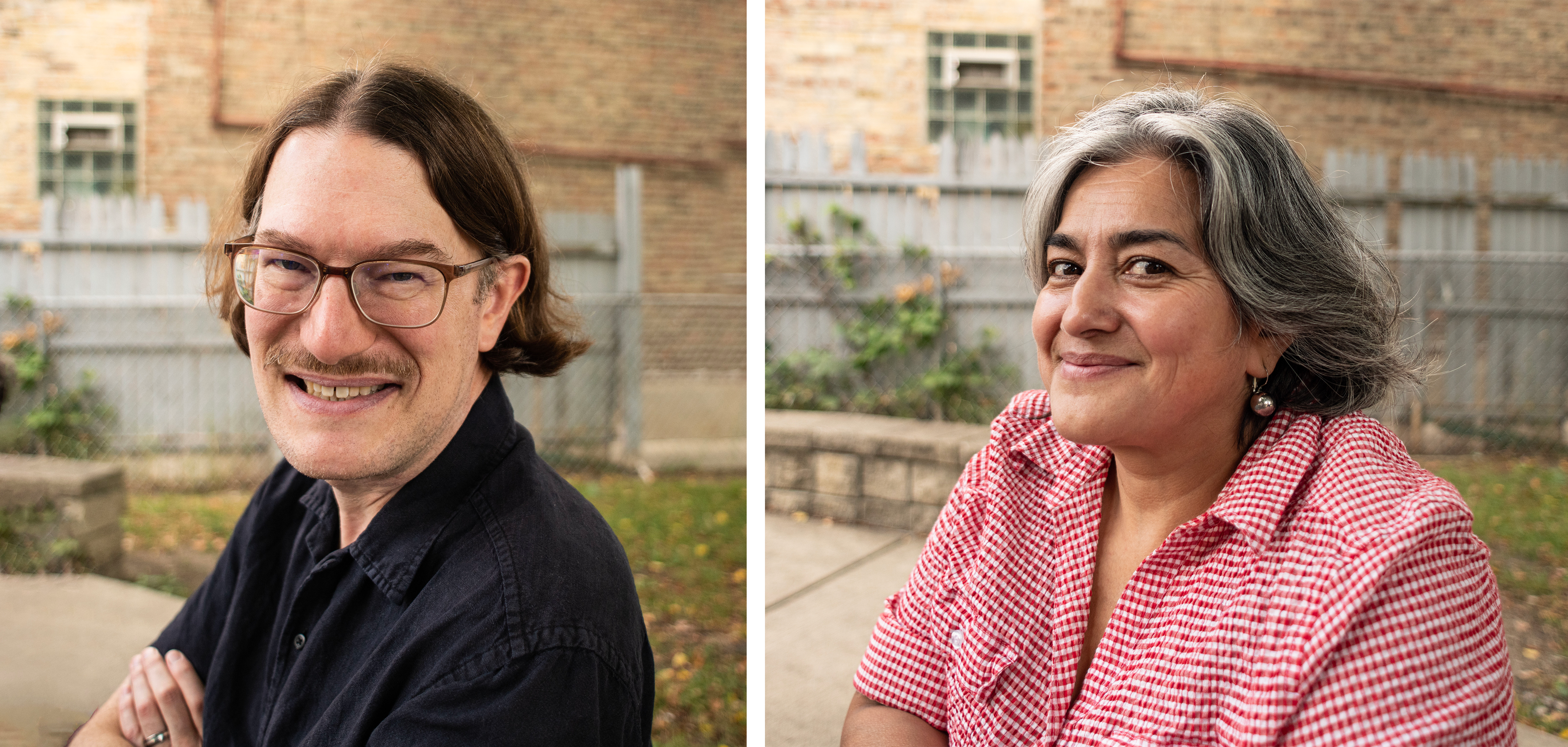Martin Seay has lived in Edgewater for fifteen years.
He describes it as a pretty leafy neighborhood — but recently they’ve lost a number of trees due to the emerald ash borer, an invasive insect that feeds on ash trees.
So Martin submitted a request to have a tree planted on his block through the city. The process got him wondering:
How has Chicago’s treescape evolved over time, and what is the city doing to plant trees in areas that have historically lacked them?
To answer Martin’s questions, we looked at how tree-lined parkways slowly replaced Chicago’s native landscape. We also spoke with a “tree ambassador” who’s helping plant trees in Little Village to address tree canopy inequity around the city.

A “marshy, windswept, ‘smelly onion’ city”
Before Chicago was Chicago — when this area was home to the Potawatomi and other Indigenous peoples — it was mostly a wet prairie.
Outside of wetlands and grasslands, the main trees you would see were different kinds of oaks, which thrived alongside more than 600 different species of animals including black bears, cougars, elk and bison.
But as European descendants forcibly settled the region, and began turning land over to agriculture and then urbanization, the trees that remained were sparse holdovers from pre-settlement times. Many of the new trees they planted were non-native species for landscaping purposes, while animals distributed invasive tree species.
So the idea that Chicago was a “City in a Garden” when the motto Urbs in Horto was adopted by the city government in the 1830s is a bit of a misnomer, said Julia Bachrach, former historian for the Chicago Park District.
Bachrach said the 1830s brought a flurry of land speculation in the Chicago area, which city officials encouraged by enticing East Coast developers to buy up stretches of land. But first they had to convince developers the land was valuable.
“It was a bit of a PR move to call this marshy, windswept, ‘smelly onion’ city the ‘City in a Garden’,” Bachrach explained.
In the 1860s, as the city began developing its celebrated system of interlinked boulevards and parks, parks commissioners looked to state officials for funding to turn the boulevards into “tree-lined pleasure drives,” Bachrach said.

The penny tree campaign
At the beginning of the 20th century, Chicago appointed its first “City Forester,” a man named Jacob Prost.
Bachrach said Prost was known for collaborating with neighborhood groups to find out where they wanted to see trees planted around the city.
“A lot of Prost's key to success was working with … different groups and organizations, including business groups and neighborhood organizations — but especially with women's clubs,” Bachrach explained.
Prost even established an annual “penny tree campaign” where thousands of trees were distributed to school children for just a penny. Prost claimed the program put one million new trees in the ground during his tenure. He also wrote pamphlets that went to thousands of Chicagoans explaining how to plant and care for trees.
But by the middle of the 20th century, many of the elms Prost helped plant had died of Dutch elm disease, and more would later succumb to the Asian longhorned beetle. In 2018 the city stopped inoculating trees against the emerald ash borer. All this to say, a combination of disease, invasive insects, extreme weather and removal by homeowners has led to the loss of about 10,000 trees per year over the last decade.

An unequal urban treescape
A healthy urban canopy bring a lot of benefits. John Lough, one of Chicago's current Senior City Foresters, said among other things trees reduce air pollutants like particulate matter, provide habitats for wildlife and reduce flooding. They also reduce temperatures in the summer and create shaded greenspaces for residents to enjoy.
But trees are not distributed equitably across the city. For example, DePaul University’s Center for Journalism Integrity and Excellence found that, from 2008 to 2020, twice as many trees were planted on the North Side than on the South Side.
And while Mayor Lori Lightfoot pledged to address this by planting 75,000 trees by 2026 (most of which will be planted in majority-Black and -Latino neighborhoods), the city acknowledged that amount of trees may not cover the number lost in the last decade alone.
If you’re a Chicago resident and you want a tree planted on your block, you can request one from the city. But the system doesn’t always work the way it’s designed.
As a Chicago Tribune investigation found, the 311 system can be difficult to navigate, and tree requests sometimes take years to fill. (Some people choose to circumvent the system and take matters into their own hands. To hear from one renegade tree-planter, click “listen” on the audio player at the top of this story.)

Tree ambassadors plant for the future
Even if you do get the city to plant a tree on your parkway, it can take 20 years or more for you to start to feel all of the benefits a tree can bring, Raed Mansour, Director of Environmental Innovation from the Chicago Department of Public Health, explained.
But that doesn’t mean it’s not worth doing.
“[When] you plant a tree, you're really not going to get the immediate benefits,” Mansour said. “You're planting a tree for your kids, for your neighbors’ kids, for future generations.”
Mansour has been helping lead “tree ambassador” trainings across the city through the Our Roots Chicago program that his department is spearheading.
Dulce Garduno has become one of those tree ambassadors for the Little Village neighborhood.

Garduno said high levels of air pollution in Chicago was one reason she wanted to become a tree ambassador. But she’s seen many other benefits from planting trees in her neighborhood. “The mental health [benefits] … beginning when you see the tree … You can feel when you’re walking in the street, how hot it is, and you can feel the difference with the trees.”
“I want to do better things for the city,” Garduno continued. “I want to do better things for the environment. [Planting trees] makes me feel like I am doing something, you know?”
Robbie Telfer is a writer living in Chicago. Follow him @RobbieQT
Maggie Sivit is Curious City’s digital and engagement producer. Follow her @magisiv


